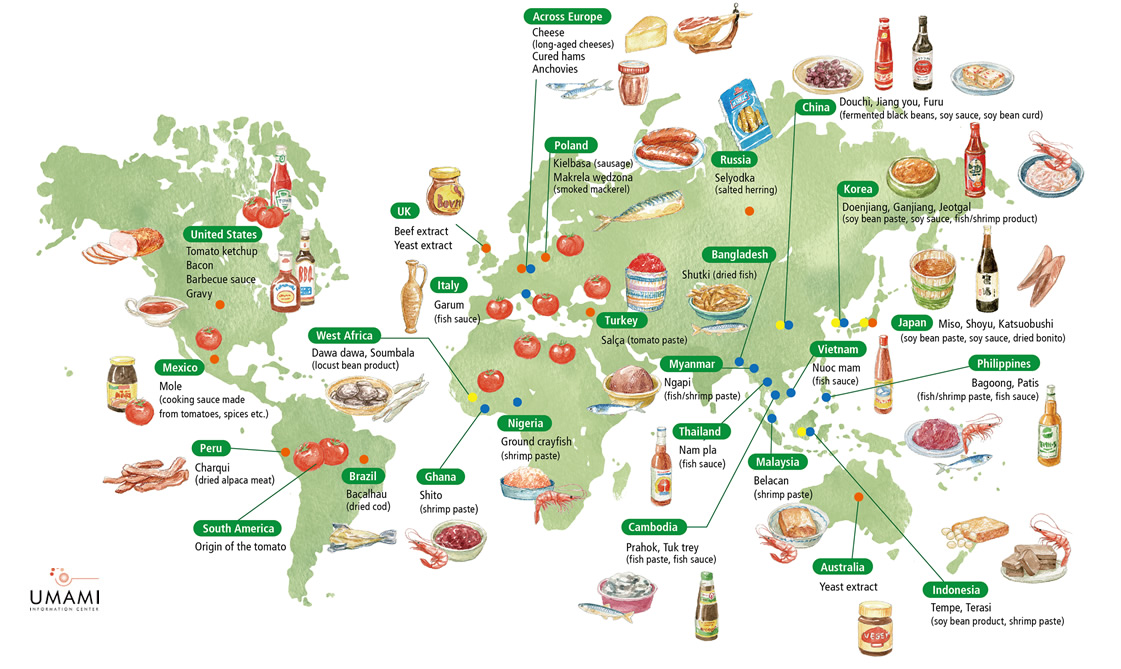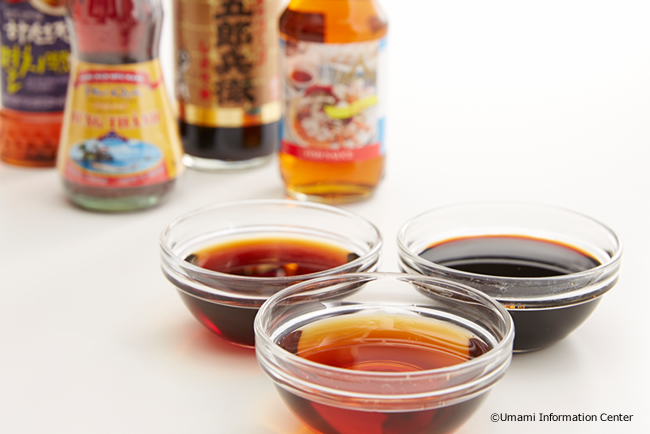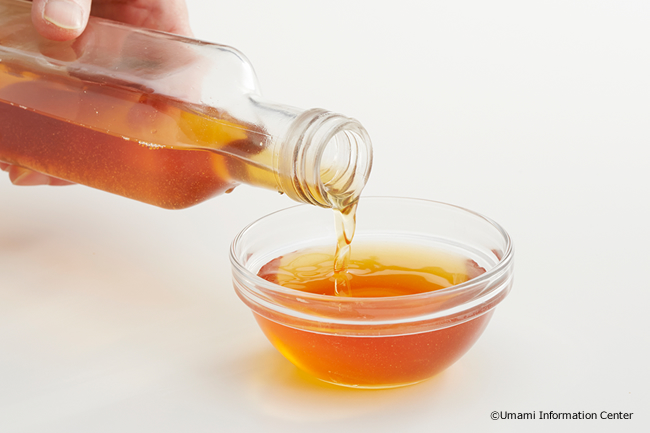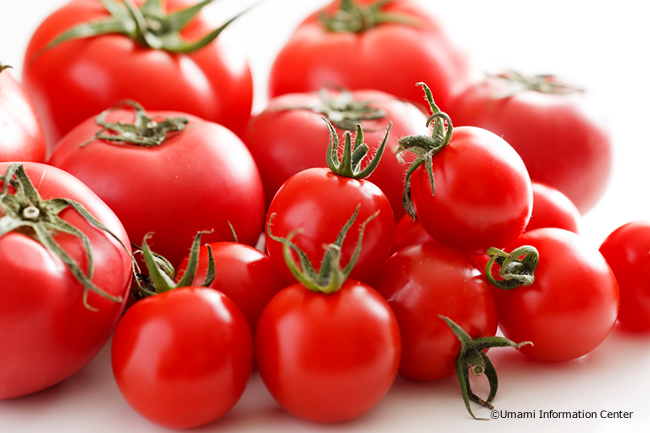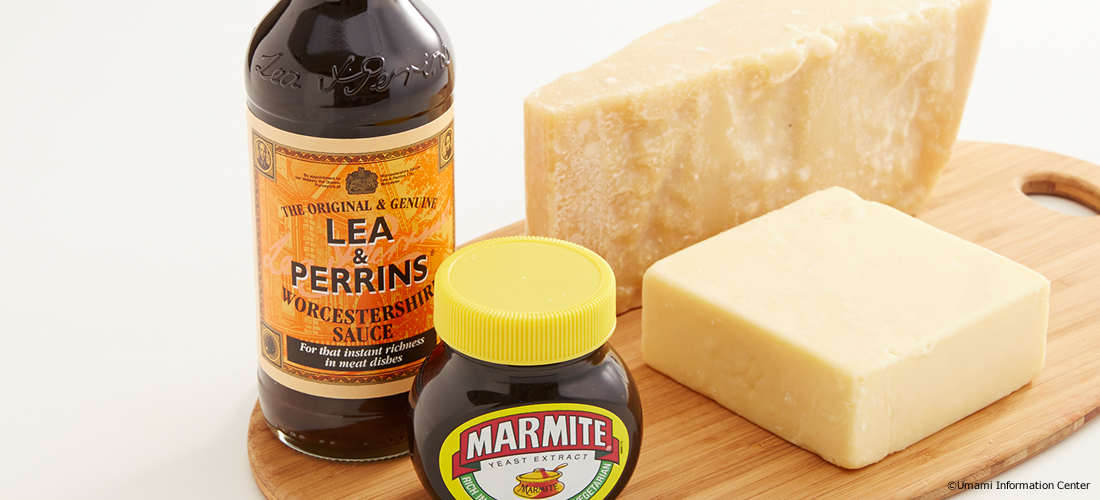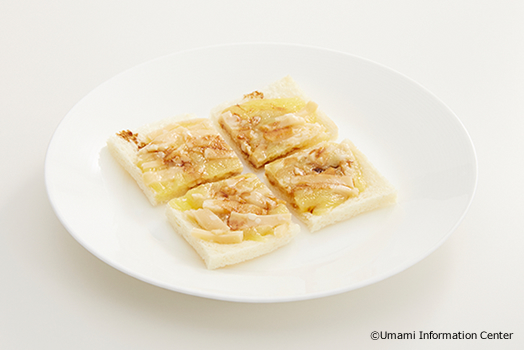This chart shows the levels of umami (free glutamatic acid) found in the Parmesan, Cheddar and Lea & Perrins sauce used in Claude’s “Cheese on Toast”, and the Marmite used in Sat’s “Sauteed pork with
Marmite”.
Parmesan cheese is one of the most umami-rich foods in the world, with 1680mg of free glutamate per 100g. For Cheddar cheese (matured for four months) the score was 78mg/100g, for Lea & Perrins 34mg/100g,
whilst Marmite - a highly condensed condiment - recorded 1960mg for every 100g.
The Lea & Perrin’s sauce used in Claude’s “Cheese on Toast” is a brand of Worcestershire sauce, a light, liquid sauce used for flavouring. The Lea & Perrins that Claude brought with him especially from the
United Kingdom was a limited edition, extra-mature blend, but the regular version is found throughout British households, and is available in around 100 countries throughout the world (*1).Claude encouraged
the students to try a little taste of the Lea & Perrins on its own, which the students described variously as “sour” and “spicy”. After splashing a few drops on top of the cheese on toast, however, students
soon discovered that the cheese and Lea & Perrins sauce combined extremely well together, with each enhancing the umami of the other.
Sat, on the other hand, made use of Marmite, a dark brown, sticky condiment made from yeast and vegetable extracts. It was first launched in the UK a century ago, and nowadays is often spread onto bread and
crackers, as well as being used to enhance meat and fish dishes, as Sat showed in his recipe (*2).The Marmite was a perfect match for the rich, aromatic flavour of the sauteエed pork, which certainly proved
popular amongst the students. Sat then had each student try a small amount of the Marmite on its own - which they described as “intense” and “....wow”. “Marmite has a really unique taste,” Sat explained,
“and British people tend to either love it or hate it, but we must remember that it’s primarily a condiment, so you can use it as part of a dish to bring out the umami already present in the other
ingredients”.
- (*1) Worcestershire sauce (Lea & Perrins) product homepage.
- (*2) Marmite (Unilever UK Limited) product homepage.
- (*3) Vacuum cooking:a technique whereby raw food is placed in a bag,either with or without seasonings / spices, and cooked at a low temperature in hot water,then served.
- (*4) If using raw rib meat,season with salt and pepper,and saut well until fully cooked through.





